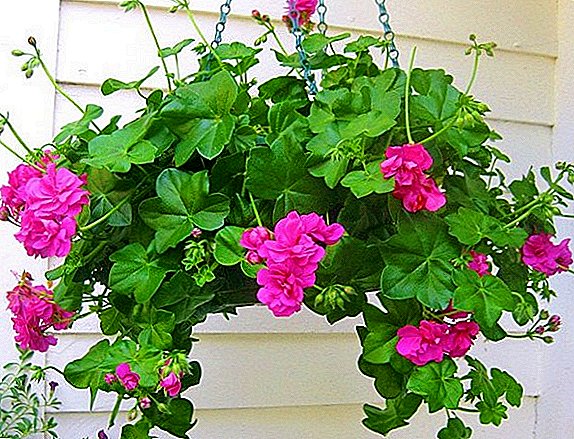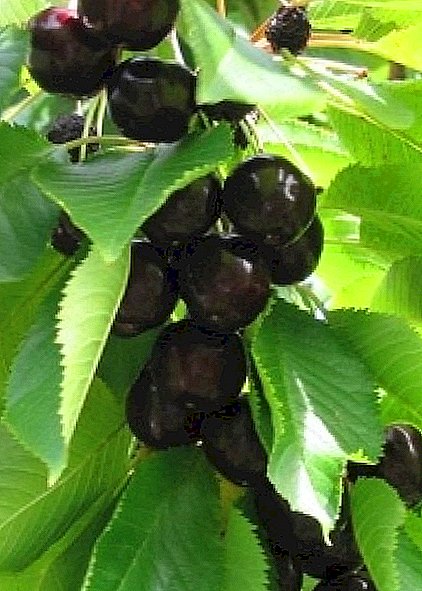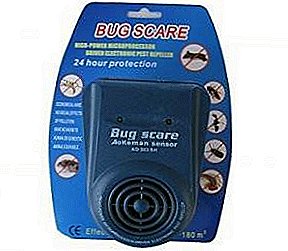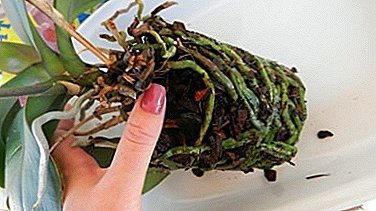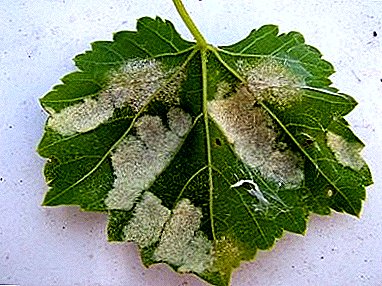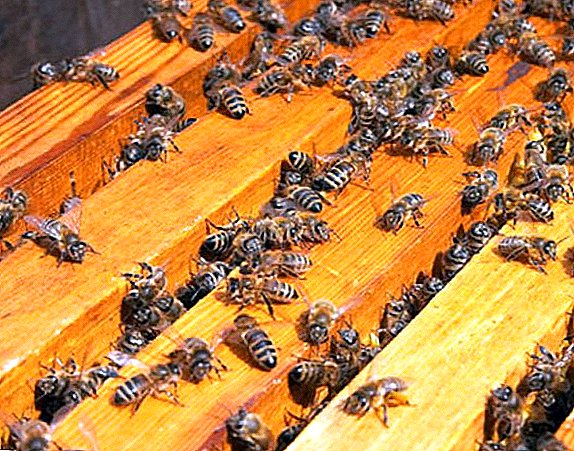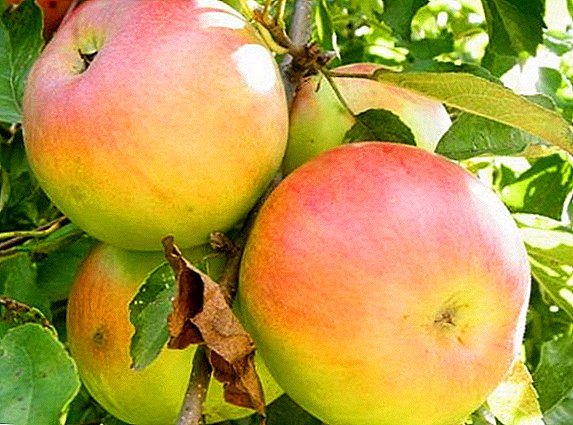 For a stable and abundant harvest of most crops grown, it is necessary to provide them with timely protection against diseases and pests. Not an exception in this regard are fruit trees grown in the garden. In particular, gardeners are often interested in what to spray apples before and after flowering. In fact, there are many effective tools, but you need to know how and when to use them correctly.
For a stable and abundant harvest of most crops grown, it is necessary to provide them with timely protection against diseases and pests. Not an exception in this regard are fruit trees grown in the garden. In particular, gardeners are often interested in what to spray apples before and after flowering. In fact, there are many effective tools, but you need to know how and when to use them correctly.
Features of processing apple trees in spring
The timely processing of apple trees in the spring is an important event that helps to get rid of many diseases and pests of trees. However, you also need to know that the war against insects should take place in three stages.
The first - usually begins in mid-March (as soon as the air temperature stably stays at + 5 ° C). At this time, the main purpose of apple treatments is to prevent diseases and destroy winter survivors, but still inactive insect pests. Before the swelling of the kidneys, spraying is carried out with the use of chemicals, that is, special fungicides and insecticides. Before direct treatment, it is necessary to trim the crown, clean the trunk from the old and dead bark, as well as clean the damaged areas and remove the foliage remaining from last year. 
Did you know? When using chemicals it is very important to take into account the characteristics of the life cycle of the tree, to know what is the growing season in an apple tree and when exactly does it pass (from the beginning of bud break up to the mass fall of the leaves). You should not get involved in processing after flowering, because apples will soon begin to ripen.The second stage occurs at the beginning of the growing season in apple trees, that is, when the buds are already beginning to bloom, but the apple trees have not yet flowered (approximately from the end of March to mid-April). In this case, the goal of the treatment to be performed will be the destruction of aphids, ticks, apple tsvetoid, scythora, sow-tree, and other small pests that wake up after hibernation.
In addition, the processing of apples during this period will help you get rid of scab and fruit rot, the problem of which is also very relevant in the spring. Copper sulphate solution, Bordeaux liquid, colloidal sulfur and "Lepidocid" (an intestinal biological preparation that helps to cope with gnawing insects) are well suited for spraying. And finally, the third, last stage of processing of apple trees in the spring implies the holding of this event immediately after the trees bloom. Choosing the right chemicals, you can get rid of moths, codling moths, aphids, moths, ticks and weevils. Also carried out spraying will allow to eliminate the appeared diseases effectively. When the flowering of the apple trees comes to an end, the spraying of the second stage can be repeated.
Important! Given the fact that during the flowering of apple trees, no treatments can be carried out, this is the ideal period to purge weeds that appear around the trees.
How to process the apple after flowering
The last stage of spring spraying of apple trees is also divided into two sub-stages: the first - immediately after the flowering of trees, and the second - 3 weeks after the previous treatment. For each of them, their own drugs are used, which we will discuss below.
The most popular funds for the first period
Immediately after flowering, the crown of the trees can be sprayed with zinc sulphate (will help prevent the development of rosette), as well as other drugs, which include sulfur and copper - they will protect plants from rust. To get rid of scab (a disease manifested on leaves, stalks, flowers and petioles), spraying with Bordeaux mixture, copper sulfate, polycarbacin (in the proportion of 4 g per 1 liter of water) or polykhom helps well.
 Caring for an apple tree in the spring, and more specifically, spraying it after flowering, can be performed using fungicidal preparations, sodium phosphate (10 g per 1 l of water) or preparation "Skor" (diluted according to the enclosed instructions). To combat aphids and suckling in this period, a shag or tobacco tincture at the rate of 400 g per 10 liters of water is perfect, after which the composition is diluted another 10 times and 40 g of soap is added to it. The resulting infusion is necessary to spray all the plants.
Caring for an apple tree in the spring, and more specifically, spraying it after flowering, can be performed using fungicidal preparations, sodium phosphate (10 g per 1 l of water) or preparation "Skor" (diluted according to the enclosed instructions). To combat aphids and suckling in this period, a shag or tobacco tincture at the rate of 400 g per 10 liters of water is perfect, after which the composition is diluted another 10 times and 40 g of soap is added to it. The resulting infusion is necessary to spray all the plants.
As an alternative, tinctures made from a decoction of tomato leaves, wormwood, dandelion, potatoes and yarrow can be used to treat apples from pests after flowering.
Did you know? Apple trees, pears, cherries, cherries and other fruit trees need a winter temperature drop, because without this, their flowers cannot develop normally. Even if some of them bloom, the fruits will still not be as tasty as the plants that have wintered naturally.
How to treat an apple tree from pests in 2-3 weeks after flowering
Some gardeners do gardening with urea and copper sulphate not in early spring, but after flowering apple trees. But if in the case of copper sulfate such a time is quite suitable, then it is better to use urea immediately after the trees awaken. Each tool has its own time, because the effectiveness of the result depends not only on the composition, but also on the time of spraying. For example, when you are thinking of spraying apple trees a second time after flowering (2-3 weeks after the previous treatment), then you will need the following preparations.  "Benzophosphate" - A fairly popular intestinal action insecticide. It is great for controlling leaf-eating and sucking pests. At the same time, the preparation practically does not harm the bees and the larvae of the grinder. The working fluid is prepared at the rate of 70 g of a 10% substance and 10 liters of water, after which the drug retains its effect for 15 days.
"Benzophosphate" - A fairly popular intestinal action insecticide. It is great for controlling leaf-eating and sucking pests. At the same time, the preparation practically does not harm the bees and the larvae of the grinder. The working fluid is prepared at the rate of 70 g of a 10% substance and 10 liters of water, after which the drug retains its effect for 15 days.
Important! "Benzophosphate" can not be used more than twice a season."Malathion" - Another well-known insecticide that perfectly exterminates mites, weevils, aphids, scutes, moths and moths. At the same time, the drug is dangerous for bees, which cannot be ignored if there is an apiary on the site. The working composition is prepared at the rate of 60 g of the drug per 10 liters of water. When processing young apple trees, up to two liters of solution should fall on one tree, while spraying an adult fruit-bearing plant will require up to 10 liters of composition.
 Chlorofos solution - Another systemic insecticide intestinal effects. It is not highly effective in combating aphids or weevil, but it is extremely poisonous for larvae and adults of mosquitoes, flies, some species of beetles and ticks. The effect of the drug lasts for 10 days. The dilution rate: 70 g of the drug in 10 liters of water. Also it is necessary to take into account that it is impossible to add Bordeaux liquid in "Chlorofos".
Chlorofos solution - Another systemic insecticide intestinal effects. It is not highly effective in combating aphids or weevil, but it is extremely poisonous for larvae and adults of mosquitoes, flies, some species of beetles and ticks. The effect of the drug lasts for 10 days. The dilution rate: 70 g of the drug in 10 liters of water. Also it is necessary to take into account that it is impossible to add Bordeaux liquid in "Chlorofos".
There are many other similar drugs, but before proceeding to their use, be sure to read the instructions and specify when it is better to use them.
How to spray the apple after flowering
Whether you are going to treat apple trees Bordeaux liquid, urea, or found another effective means to get rid of trees from pests in the spring, in any case, you need to know how to spray. First of all, prepare the selected liquid (already dissolved in water), the apparatus for performing the procedure (pump) and the appropriate protective equipment (mask, gloves and goggles).
It is easiest to spray a columnar apple: all that is required of you in this case is to go around the plant several times and spray the fungicide over its entire surface. No need to look for a ladder and get out to get to the uncomfortable growing branches.
 As for young apple trees, then everything is somewhat more complicated. It is important to spray the solution completely over the entire surface of the plant, starting from the trunk and ending at the very top (try not to miss a single branch).
As for young apple trees, then everything is somewhat more complicated. It is important to spray the solution completely over the entire surface of the plant, starting from the trunk and ending at the very top (try not to miss a single branch).
Important! Too concentrated solution can cause serious harm to the young, and chemical burns will appear on the thin bark of the immature shoots.To avoid such consequences, conduct a small experiment: select one plant and apply the prepared mixture to its branch (only one!). Then wait a few days (2-3 days) and inspect it. If the plant looks healthy and there are no strange spots on the place of processing, it means that you can safely spray the composition on all the plants remaining in the garden.
In the case when an old apple tree was chosen for the experiment, then ultimately you will get one of two possible results: either the damaged part of the plant will not be able to recover, or the chemical agent will not be able to greatly harm the thick-skinned tree (but then it will damage all young plants, which fall on a few days).
 So, you have learned how to spray apple trees in the spring and what you need to do this, now it remains only to acquire the necessary means and get to work (if, of course, the season allows).
So, you have learned how to spray apple trees in the spring and what you need to do this, now it remains only to acquire the necessary means and get to work (if, of course, the season allows).
However, whatever you decide in the spring to spray your apple trees, in any case, do not forget about the purpose with which it is done. If plants show clearly visible signs of pest or disease activity, the use of chemicals will be fully justified, but if there are no signs of attacks by aphids, leafworms or other uninvited guests during inspection, it is still possible to do without dealing with apple trees in the spring. pests. Nevertheless, you should not forget about prevention at all, because it is she who can save you from the invasion of harmful insects, creating excellent conditions for the full development of apple trees in the garden.




